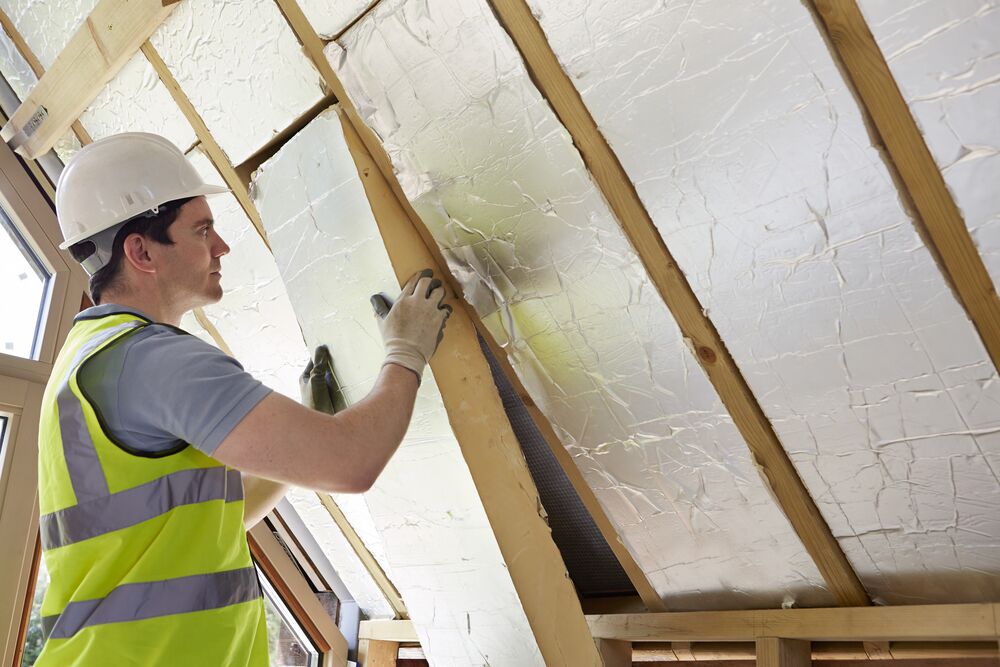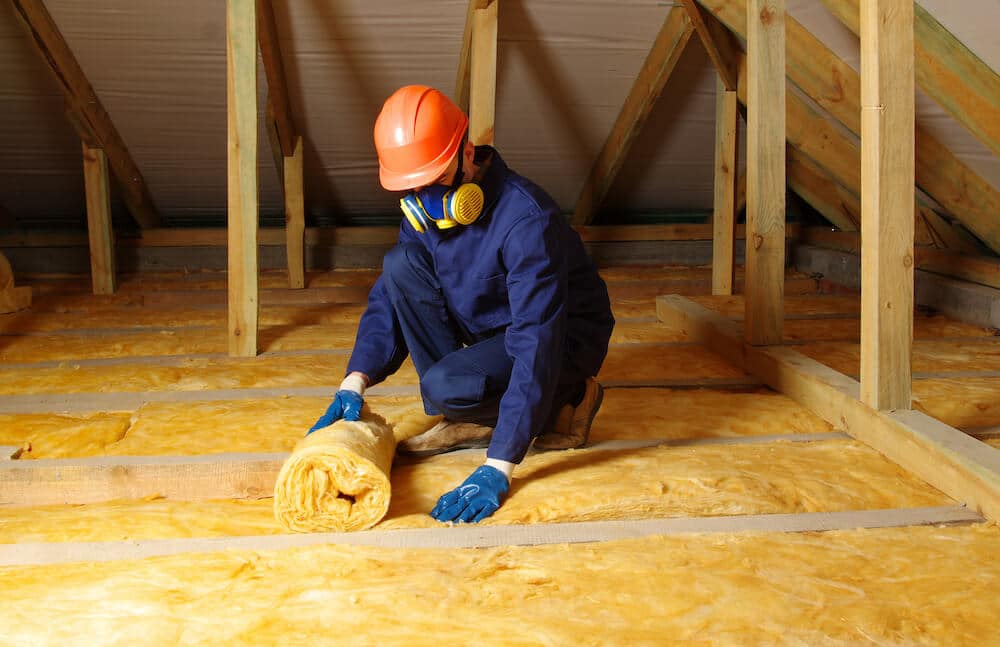Why Attic Insulation DFW is Essential for Energy Performance in Dallas-Fort Worth
Why Attic Insulation DFW is Essential for Energy Performance in Dallas-Fort Worth
Blog Article
Discover the Different Sorts Of Attic Insulation and Their Special Benefits for Your Home's Energy Efficiency

Fiberglass Insulation
Fiberglass insulation is just one of the most generally utilized materials for attic room insulation due to its superb thermal performance and cost-effectiveness. Made up of small glass fibers, this product successfully traps air, producing a shielding obstacle that aids preserve consistent interior temperatures. Its high R-value per inch makes it specifically efficient at standing up to heat transfer, which is critical for energy conservation in homes.
Installation of fiberglass insulation is fairly uncomplicated, commonly readily available in batts or loose-fill forms, fitting various attic arrangements. In addition, it is immune and non-combustible to dampness, decreasing the danger of mold advancement. This resilience adds to its durability, making fiberglass a sensible long-lasting financial investment for home owners.
In addition, fiberglass insulation is typically made from recycled materials, which enhances its eco-friendliness. The material can likewise add to soundproofing, lessening noise transfer between spaces. While it is vital to wear safety equipment throughout installment to stay clear of inflammation from the fibers, the overall advantages of fiberglass insulation, including power cost savings and ecological factors to consider, make it a prominent option for boosting attic room performance and promoting a comfortable living environment.
Spray Foam Insulation
Spray foam insulation is an extremely reliable option for attic room insulation, known for its superior air securing and thermal efficiency. This cutting-edge insulation product is made up of a mixture of isocyanate and polyol resin, which, when incorporated, increases swiftly to fill up spaces and tooth cavities in the attic room area. Its ability to abide by different surfaces guarantees a continuous barrier versus air leakages, considerably minimizing warmth loss throughout cooler months and warm gain throughout warmer periods.
Among the essential benefits of spray foam insulation is its high R-value per inch, which implies it provides exceptional thermal resistance in a reasonably thin application. This is particularly advantageous in attic rooms where room is often minimal. Furthermore, spray foam can assist decrease moisture accumulation, lowering the danger of mold and mildew and mold growth, which can be harmful to both the structure and indoor air high quality.
While the preliminary cost of spray foam insulation might be higher than standard choices, its long-term power savings, combined with enhanced convenience and improved home value, make it a worthwhile financial investment for home owners seeking enhanced energy effectiveness. Attic Insulation DFW. Overall, spray foam insulation sticks out as an efficient solution for enhancing attic room insulation
Cellulose Insulation

Cellulose insulation is a preferred choice for attic insulation, mostly composed of recycled paper items treated with fire resistants. This eco pleasant alternative is recognized for its superb thermal performance, properly decreasing warm transfer in both summertime and winter season. The dense structure of cellulose enables it to fill voids and gaps in attic spaces, offering a smooth barrier against air leakages.
One of the significant advantages of cellulose insulation is its ability to resist mold and YOURURL.com mildew and insects, owing to the fire retardant treatments utilized during manufacturing. Additionally, it flaunts a high R-value per inch, which equates right into exceptional energy performance. Home owners can expect reduced home heating and air conditioning prices as an outcome of boosted insulation.
Installation is normally accomplished with blowing loosened cellulose right into the wanted location, permitting for a quick and effective process. This method also minimizes disruption to the existing structure. In addition, cellulose insulation has a reasonably low ecological effect, as its manufacturing process uses recycled materials, adding to sustainable building techniques.
Rock Wool Insulation
Amongst the numerous choices for attic insulation, rock wool, likewise understood as mineral woollen, sticks out due to its excellent thermal and acoustic performance. Made from natural or recycled materials, rock woollen is developed by thawing rock and rotating it right into fibers, causing an item that uses exceptional insulation residential properties.
Among the considerable advantages of rock woollen insulation is its high R-value, which indicates its effectiveness in resisting heat flow. This characteristic not only boosts power performance yet additionally adds to preserving a comfortable indoor temperature year-round. In addition, rock woollen is naturally fireproof, making it a more secure alternative for homes as it can stand up to heats without melting or launching harmful fumes.
Moreover, rock woollen insulation stands out in soundproofing capabilities, successfully reducing sound transmission in between rooms and from outside resources. Overall, rock woollen insulation gives an extensive option for improving energy effectiveness, safety and security, and comfort in domestic setups.
Radiant Barrier Insulation
Glowing obstacle insulation serves as a reliable solution for try this web-site reducing warm transfer in attic rooms, especially in warmer environments. This type of insulation jobs by mirroring glowing warm away from living spaces, thereby minimizing the quantity of warmth that gets in a home throughout heat - Attic Insulation DFW. Normally made up of a very reflective product, such as aluminum foil, glowing obstacles are mounted in attic rooms, encountering the roof, where they can intercept incoming warm from the sunlight
The main advantage of glowing obstacle insulation is its ability to reduced air conditioning prices. By mirroring warm instead than absorbing it, glowing obstacles can assist preserve a more steady indoor temperature, minimizing the workload on air conditioning systems. This effectiveness equates into lower energy bills and enhanced comfort for homeowners.
Along with power savings, glowing barriers can likewise add to improved indoor air quality. By reducing heat build-up, they aid minimize moisture degrees, which can avoid mold and mildew development and boost general air flow. When installed correctly, glowing barrier insulation can be an invaluable enhancement to any kind of energy-efficient home, making it a deserving consideration for homeowners wanting to boost their attic room insulation method.
Conclusion
In final thought, recognizing the various types of attic room insulation-- fiberglass, spray foam, cellulose, rock wool, and radiant barriers-- allows property owners to make enlightened choices pertaining to power efficiency. By choosing the proper insulation material, substantial decreases in energy prices can be achieved, along with improvements in indoor comfort.

In verdict, understanding the numerous types of attic insulation-- his response fiberglass, spray foam, cellulose, rock woollen, and glowing obstacles-- enables property owners to make educated decisions regarding energy performance.
Report this page